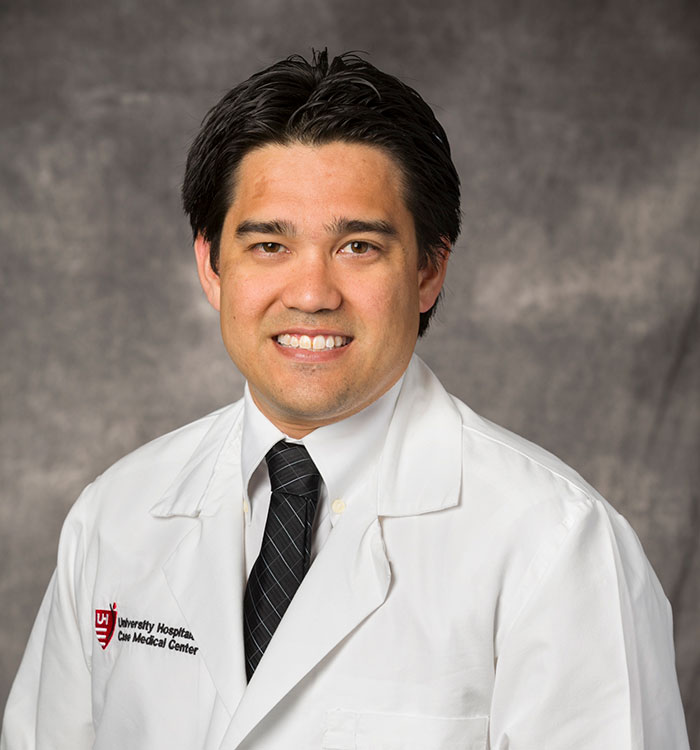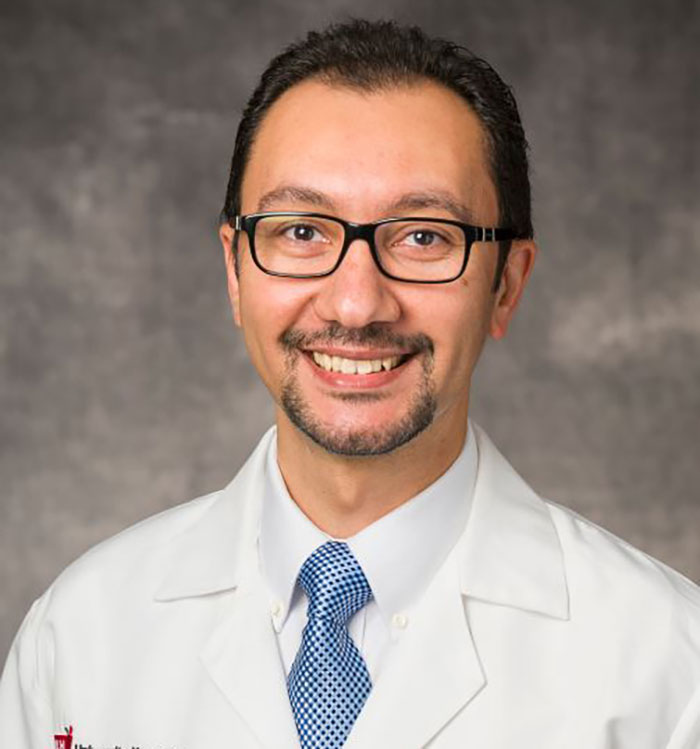How COVID-19 is Changing Gynecology Practice Patterns
June 23, 2020
New UH study begins to explore impact of pandemic on worldwide scale
Innovations in Obstetrics & Gynecology | Summer 2020 issue
 John Nakayama, MD
John Nakayama, MD Sherif El-Nashar, MD, PhD
Sherif El-Nashar, MD, PhDHealthcare leaders have had to shoulder the massive responsibilities of caring for people directly affected by COVID-19 and shifting normal practice to mitigate the spread of the pandemic. Behind the scenes, researchers across the country have been working to understand how changing practice patterns are affecting patient care.
At University Hospitals in Cleveland, a survey to study how to evaluate ways COVID-19 is affecting the subspecialty of gynecologic oncology was led by John Nakayama, MD, Director of Robotic Surgery, gynecologic-oncologist, University Hospitals Cleveland Medical Center; and Assistant Professor in the Department of Obstetrics and Gynecology, Division of Gynecologic Oncology, Case Western Reserve University School of Medicine.
“Everyone’s clinical volumes dropped across the country,” Dr. Nakayama says. “Where are these patients? It is not like cancer decided to take a break for two months.”
Dr. Nakayama and his multidisciplinary team of co-authors knew they needed answers and quickly. They sent a survey to members of the Society of Gynecologic Oncology and published the results of the study, “Adjusting to the new reality: Evaluation of early practice pattern adaptations to the COVID-19 pandemic,” in the journal Gynecologic Oncology.
Physicians from nearly every state, as well as countries outside of the U.S., responded to the survey. The results reveal that physicians in gynecologic oncology experienced a 61.6 percent drop in practice volume during the pandemic. More than half of respondents (52.8 percent) named ovarian cancer patients as the most likely be affected by delays in care.
While the study has provided valuable insight, Dr. Nakayama and one of his co-authors, Sherif El-Nashar, MD, PhD, Female Pelvic and Reconstructive Surgery, UH Cleveland Medical Center; and Associate Professor of Obstetrics and Gynecology, Case Western Reserve University School of Medicine, are just getting started on understanding how COVID-19 is impacting gynecology and its subspecialties.
Dr. Nakayama and Dr. El-Nashar are a part of a working group that is compiling more survey research. Using the experience gained from the gynecologic oncology-focused survey, the team is preparing a survey to examine how COVID-19 has affected urogynecology on a worldwide scale.
They are also looking for answers within their own health system. “We now have a working group on the impact of COVID-19 on post-graduate medical education, residencies and fellowships at UH,” Dr. El-Nashar says. “That will be important to guide any change that is needed from our perspective as teachers.”
The research group is also mining UH’s EHR data to create a clearer picture of what is happening during the pandemic, according to Dr. Nakayama. If COVID-19 cases do increase again in the fall, the health system will have data on the highest risk people, which opens the door to early intervention. “We are all trying to identify new ways that we could change the COVID course,” Dr. Nakayama says. “We are trying to fight the fear with information.”
Research on COVID-19 is being done rapidly on a global scale, which can make it difficult to secure funding. In response, UH launched an emergency grant to support its clinical researchers, Dr. El-Nashar says. “Both the IRB at UH and UH clinical research leadership should be noted for their efforts.”
UH team members across the health system have stepped up to lend their support to this research. Statisticians, big data experts and IT leaders are playing an important role in understanding COVID-19 practice patterns and what they mean for the future. “There are huge numbers of people who you don’t see working on this behind the scenes,” Dr. Nakayama says.
This work at UH is establishing the groundwork for being better prepared in the future. Whether it is regularly integrating telemedicine or looking for ways to protect at-risk populations during the pandemic, UH researchers are trying to build a path to better care in gynecology and other specialties.
“With any crisis there is potential for a hope and innovation,” Dr. El-Nashar says. “I think some of the changes that happen in response to the crisis will remain with us, and maybe that will help us to take better care our patients in future.”
For more information or to refer a patient, call 216-553-1537.


